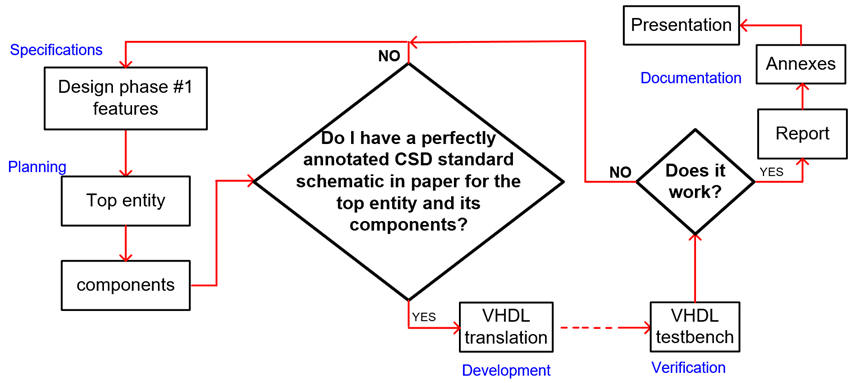| | ||
PLA6_7: Designing FSM, datapaths and dedicated processors |
||
| NOTE: This post lab assignment must be solved only after having completed successfully lab sessions Lab6 and Lab7 because you will copy and adapt ideas and materials from it. |
This group submission at Atenea includes the report in a PDF file, the zipped project, a 10 min. max video presentation and also your self-assessment. Follow this rubric for writing reports. To prepare your video presentation, consider the assessment and feedback you were given in previous PLA3 presentation.
Specifications
| Example of group assignments | ||||
| Project number | Circuit entity | FSM encoding | Target chip | |
| Group 1 | D2.9 | Water tank controller | #1: radix-2(sequential) | #1: Cyclone IV |
| Group 2 | D2.3 | LED rotator | #2: Gray | #2: MAX II |
| Group 3 | D2.2 | Stepper motor controller | #3: Johnson | #3: MAX10 (*) |
| Group 4 | D2.9 | Water tank controller | #4: one-hot | #1: Cyclone IV |
| ... | ... | ... | ... | ... |
(*) For gate-level simulations, choose the MAX II chip
Repeat this project flowchart for the several design phases:

|
NOTE: ===> This PLA6_7, like all the others, is an open semi-structured design project. It gives you some guidelines on how to start and continue. It can have different valid solutions, it may contain errors and you may feel free to create new components and variations. We also will add materials or corrections if we find it necessary. |
Time is a valuable finite resource. Learn to manage and maximise your study time with your team mates. If after having studied in detail our materials, you cannot advance or have doubts or you do not find a component of your interest, ask questions. Remember that investing time in your PLA and LAB tutorials is also studying for passing exams.
P_Ch2 marking grid for PLA7 pprojects
P_Ch2 => 6% of your final grade => PLA6_7 (work in progress, report + video, 100%)
| PLA6_7 handwritten report and video presentation: | ||||
| Video | Report | |||
| 4p | 6p | |||
Notes on lab assessment: student grades are not simply reflecting report or video quality, but implicitly, they include laboratory participation, questions and answers, problem solving skills, attendance and punctuality, active attitude and group work. Work in progress includes completing tutorials, sample reports, sketches, diagrams, discussions, Q & A, presentations, live demonstrations, results, measurements, etc.
Reflect and give us your group feedback on what you learned in chapter 2 (from P5 to P8). Add a short paragraph in the final section of your PLA6_7 discussing aspects that you consider positive and negative.


